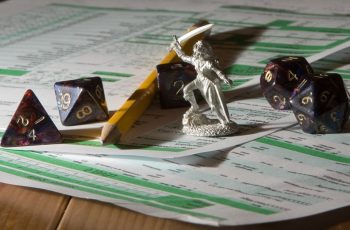What is a Passive Perception?
Passive perception is basically a measure of how situationally aware you are.
It is also is what game masters use to see if you naturally spot stealthed creatures or something hidden without your character searching the area.
Passive perception speeds up 5th edition games and make them run more smoothly by setting an automatic success rate.
Ways to Handle Passive Perception.
- Stealth Only – Passive perception only happens specifically with noticing hidden creatures, it has no effect or use on hidden objects. In order to find a trap, you need to make active checks and rolls. If you don’t actively look for a trap, you won’t find it.
- Clues – Clue based passive perception turns finding traps and hidden objects into a bit of a skill challenge. Your passive perception will tell you a simple fact, or give a simple clue to the true nature of whatever is nearby.
- Sherlock Sense – With Sherlock sense, most traps are handled quickly and easily as your passive perception gives you the most amount of information possible, usually specifying where the trap trigger/pressure plate is.
- Minimum Roll – This isn’t part of the Rules As Written (RAW) but, If you would like to roll lower than your passive perception, you use it instead.
Players don’t decide when to make a passive check. It’s the Dungeon Master who might use the passive score instead of asking a player for an ability check.
Formula to Calculate Passive Perception.

The proficiency bonus is only added if any.
A wisdom modifier or an ability’s modifier is usually the part of the ability that is used for attack rolls, defenses, skill checks and other features of your character.
The proficiency bonus represents your experience from a role playing viewpoint, and your power curve from a game design viewpoint.
Example:
Suppose you are at +15 wisdom modifier, calculate your passive perception.

Therefore, your passive perception is 25.

